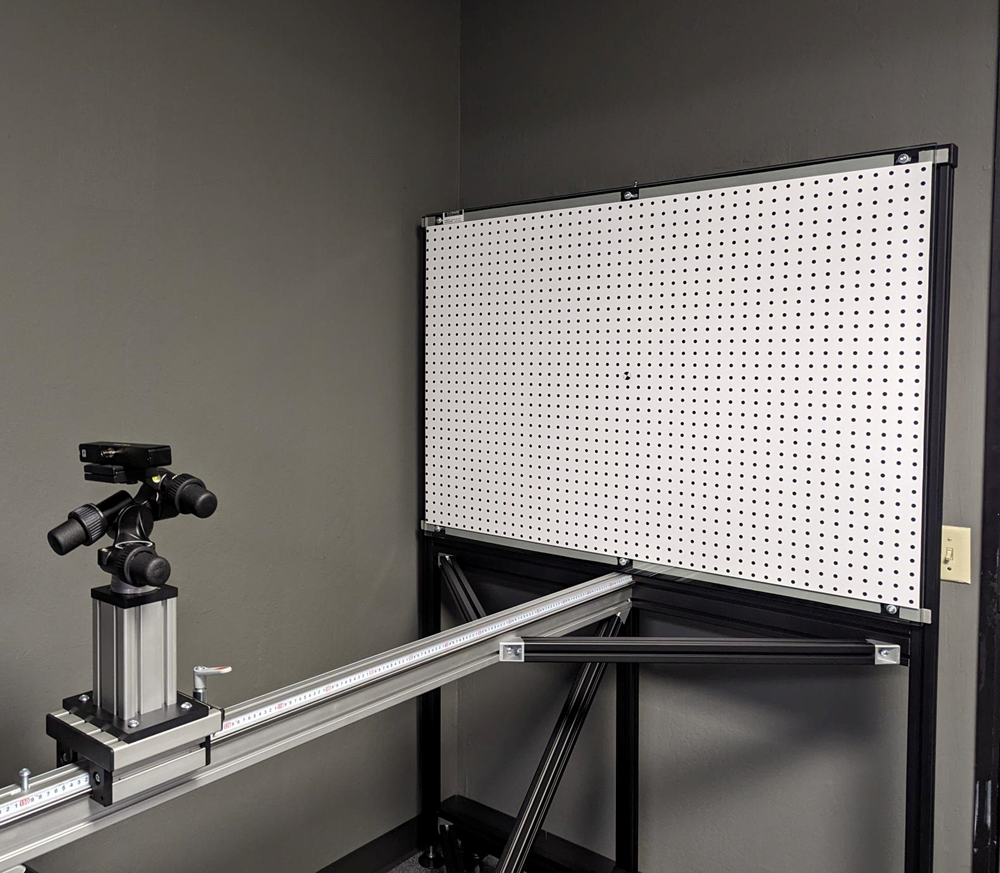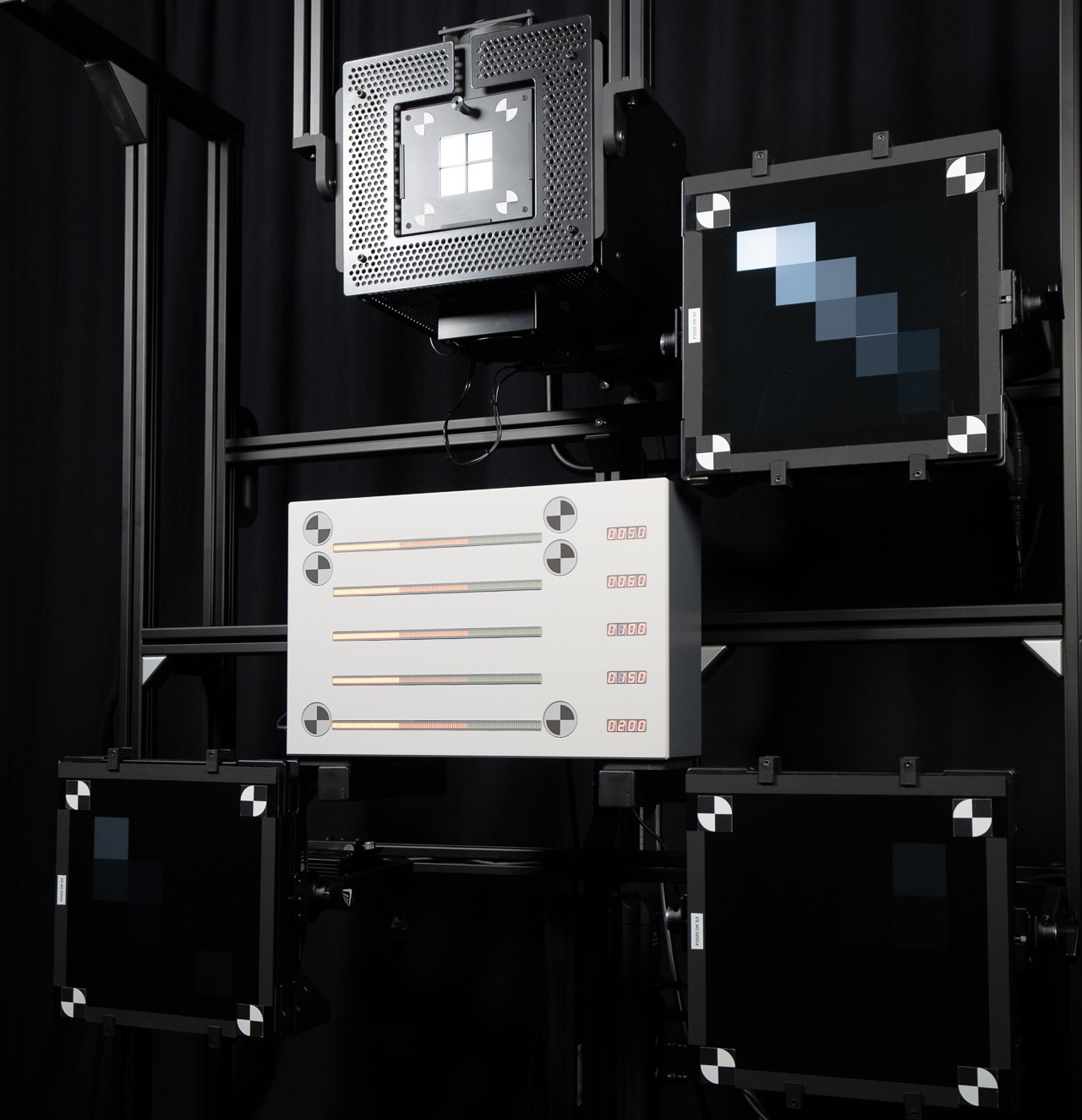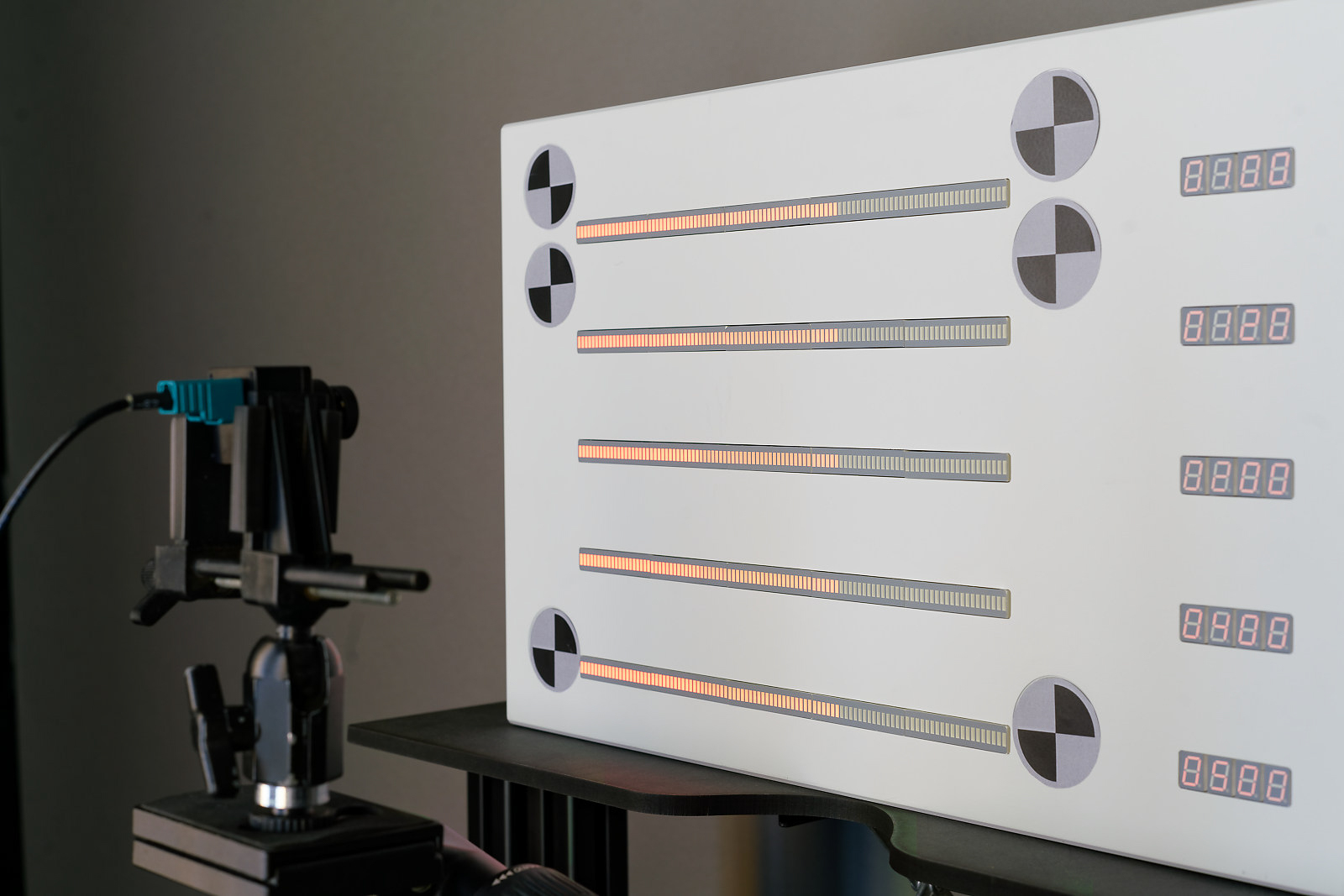Leopard Imaging & DXOMARK Quality Testing Lab
Located at our headquarters in Fremont, California the lab has a variety of devices used to meet the highest quality testing standards for camera and lens technology. To learn about services offered, check out our Services Available!
DXOMARK is a French technology company and the international leader in the multimedia quality assessment of professional and consumer electronics products (such as automotive cameras, machine vision, smartphones, laptops, and more). As a private and independent company, DXOMARK’s mission is to help Original Equipment Manufacturers develop high-quality products for the benefit of the end user.
Based in Boulogne-Billancourt near Paris, DXOMARK has carried out thousands of tests each year for over 20 years in the company’s 17 state-of-the-art laboratories, which have been developed in-house. More than 200 of these laboratories, which are 100% dedicated to measuring and optimizing the quality of professional and consumer electronics products, have been sold to tech companies around the world.
Here are some of those lab features:
MLS Room (Multispectral Lighting System)
The MLS Room uses the Multispectral Lighting System for precise image analysis with uniform illumination for test charts. Its 16 independently controlled LED channels offer customizable lighting, ensuring flicker-free light even at low levels. With lux levels ranging from 0.1 to 10k lux without moving the lighting system, the computer-controlled system guarantees automatic stabilization for consistent illumination conditions. This advanced setup not only enhances the accuracy of imaging tests but also streamlines the process by eliminating the need for manual adjustments. The MLS Room System is an essential tool for researchers and engineers who demand precise and reliable lighting conditions for their work.
3D and Stereovision Bench
The 3D and Stereovision Bench utilizes a glass chart for optimal flatness, enabling the computation of a complete distortion model with intrinsic and extrinsic parameters from just two captures at different positions. Additionally, the system provides a depth error map, proving its versatility for applications requiring high performance, including medical use, as well as compatibility with stereovision cameras found in AR/VR headsets. This advanced bench ensures precise calibration and measurement, making it a vital tool for developers and researchers working on cutting-edge imaging technologies. Its robust design and accurate output enhance the reliability and accuracy of stereovision systems in various high-stakes applications.
Dynamic Range Setup
Dynamic range refers to the ability of a camera to capture a wide spectrum of luminance or radiance in a scene with high accuracy and quality. This capability is especially crucial in automotive cameras, where a high dynamic range ensures that the camera can provide clear and reliable images in various lighting conditions, from bright daylight to low-light nighttime scenarios. By accurately capturing this range, the camera helps enhance safety features like safety notifications and autonomous driving functionalities. For instance, in nighttime driving, the camera must differentiate between the bright headlights of oncoming cars and the dark, unlit sidewalk to ensure that all important details are captured and interpreted correctly.
To evaluate the dynamic range of automotive camera systems, standardized black-box tests are employed. These tests measure the dynamic range and characterize any nonlinear processes the cameras use to extend their range. Typically expressed as a ratio in decibels (dB) between the maximum and minimum scene luminance or radiance, a higher dynamic range value indicates a camera’s ability to capture a wider range of brightness levels. This broader capture range ensures more accurate scene interpretation, which is vital for minimizing the risk of collisions and enhancing overall safety in autonomous driving applications.
Flare Bench
The Flare Bench is a measurement setup designed to generate sun-like flare images in a controlled lab. This compact, automated, and portable tabletop setup features a bright light source that mimics the apparent size and color temperature of the sun. It includes an analyzer that measures flare intensity and attenuation by processing RAW images taken with the device being tested. Flare, or stray light, occurs when an imaging system captures not only the intended light from the scene but also light from other sources and directions. This stray light can reduce image contrast, introduce unwanted artifacts, and degrade overall image quality. Flare is primarily caused by internal reflections and scattering within the optical elements of the imaging system, which can occur between lens elements, on lens surfaces, or even within the camera body itself.
The impact of flare on an image depends on various factors such as the intensity and direction of the stray light, the design and quality of the lens, and the characteristics of the scene being captured. To mitigate flare, lens coatings and anti-reflective measures are often employed to reduce internal reflections and improve the transmission of intended light. Additionally, post-processing techniques, such as adjusting contrast, removing artifacts, or using specialized software tools, can help reduce or eliminate flare effects. By utilizing these methods and tools, the overall image quality can be significantly improved, ensuring that the final captured images are free from the detrimental effects of flare.
LED Flicker Module
The LED Flicker Module addresses a critical challenge for camera manufacturers, especially in the automotive industry, where flickering can have serious consequences. This module uses the LED Universal Timer to automate and enhance the efficiency of performing five simultaneous tests on camera sensitivity to LED flicker, accurately replicating real-use cases with varying frequencies, duty cycles, brightness, and phases. Flicker, in the context of imaging, refers to the fluctuation in brightness or color of an image caused by variations in scene illumination. A common cause is light sources powered by 50/60Hz alternating current (AC), where illumination may appear constant to the human eye but fluctuates in the camera image if appropriate countermeasures are not taken.
Pulse-width modulation (PWM) driven LED lighting has increased the occurrence of flicker from LED light sources as observed by video cameras. PWM controls the brightness of LED lights by rapidly turning them on and off. When the camera’s exposure time synchronizes with the LED’s on-off cycle, it can result in flickering effects in the captured video or image sequence. To mitigate this issue, some cameras are equipped with anti-flicker technologies that adjust their exposure timing. Additionally, specialized algorithms can be used during image processing to reduce flicker in post-production. These measures help ensure that camera footage remains clear and consistent, free from the distracting and potentially dangerous effects of flicker.
Leopard Imaging Services Available
Additional Services by Request
Tuning Support
- Black Level Calibration
- Lens Shading Calibration
- White Balance Calibration
- Color Correction Matrix Calibration
- Noise Reduction
- Sharpness Adjustment
- High Dynmaic Range (HDR) Calibration
- Tone Curve Adjustment
Benchmarking
- Color Reproduction
- Dynamic Range Assessment
- Frame Rate Consistency
- Resolution Testing
- Image Processing Speed
- Low Light Performance
Quality Evaluation
- Color Accuracy Testing
- MTF Testing
- White Balance Testing
- HDR Testing (up to 170dB)
- Flare Testing
- Distortion Testing
- SNR Testing
- Stereovision Measurements
Customized Testing
- LED Flicker Testing
- Specialized Light Conditions
- Specific Use-Case Simulations
- Adaptive Optics
- Field-of-View
- And more!








